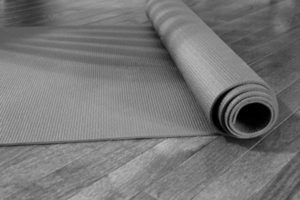False.
PILATES IS A low-impact method of exercise that usually combines stretching and muscular endurance activities. Pilates exercises can be performed on either a mat or a specialized Pilates apparatus.
There are several variations of Pilates; some are geared toward rehabilitation, while others are geared more toward general fitness. I find it interesting that Pilates was popular with dancers before it started to gain popularity with the general population. Today, millions of people participate in daily Pilates exercise classes, follow along with Pilates videos or perform Pilates on their own.
When I hear people talk about Pilates, I often hear the claim that Pilates exercises increase muscle length, resulting in longer, leaner-looking muscles—a misconception certainly perpetuated on the Internet. Here is a direct quote I recently found online: “However, there is a definite emphasis on eccentric conditioning in Pilates, and it is thanks to it that we develop longer, toned muscles instead of short and bulky ones.”
If you have ever engaged in Pilates, you certainly know it can be an intense and challenging workout. I vividly remember the first time I joined my wife at the gym for a Pilates class. After the first 5 or 6 minutes, I knew I was working my muscles in ways they hadn’t been worked before. Some studies have shown that Pilates gives you such an intense workout that it actually leads to slight increases in muscle hypertrophy—the size of your muscle.
Generally speaking, there are three types of muscle contractions. 1)Concentric contractions occur when your muscles are being shortened, as when you raise the weight during a bicep curl. 2)Eccentric contractions occur when your muscles are being lengthened, as when you lower the weight during a bicep curl. 3)During isometric contractions, muscle length doesn’t change.
Because many Pilates activities have a greater focus on eccentric contractions, people might think you get longer muscles from Pilates. However, eccentric contractions don’t lead to an actual lengthening of your muscles; in other words, eccentric contractions don’t result in your muscle “stretching” from being 4 inches long to 5.5 inches long.
Pilates does improve flexibility, but that improvement doesn’t affect muscle length. Lots of things can improve our flexibility—static and dynamic stretching as well as regular physical activity, for example—but these activities don’t change muscle length. Think about it: If Pilates really did lengthen muscles, those who did lots of Pilates could potentially look a bit misshapen! A recent review of the beneficial effects of Pilates (Cruz-Ferreira 2011) suggests that Pilates is effective at improving flexibility, dynamic balance and muscular endurance. Other outcomes evaluated in this literature review included reaction time, number of falls, physical self-concept, life satisfaction and the perception of health status. However, there is limited evidence to suggest that Pilates is responsible for having an impact on these additional measures. In fact, the authors didn’t even consider “muscle lengthening” as a potential positive impact of Pilates.
If you have never experienced a Pilates class, give it a try! Even though my first one was incredibly challenging and resulted in some muscle soreness for a couple of days, I still perform a variety of Pilates activities on a weekly basis.
Cruz-Ferreira, A., Fernandes, J., Laranjo, L., Bernardo, L., and Silva, A. A systematic review of the effects of Pilates method of exercise in healthy people. Archives of Physical Medicine and Rehabilitation (2011), Vol 92, pp. 2071-2081.
